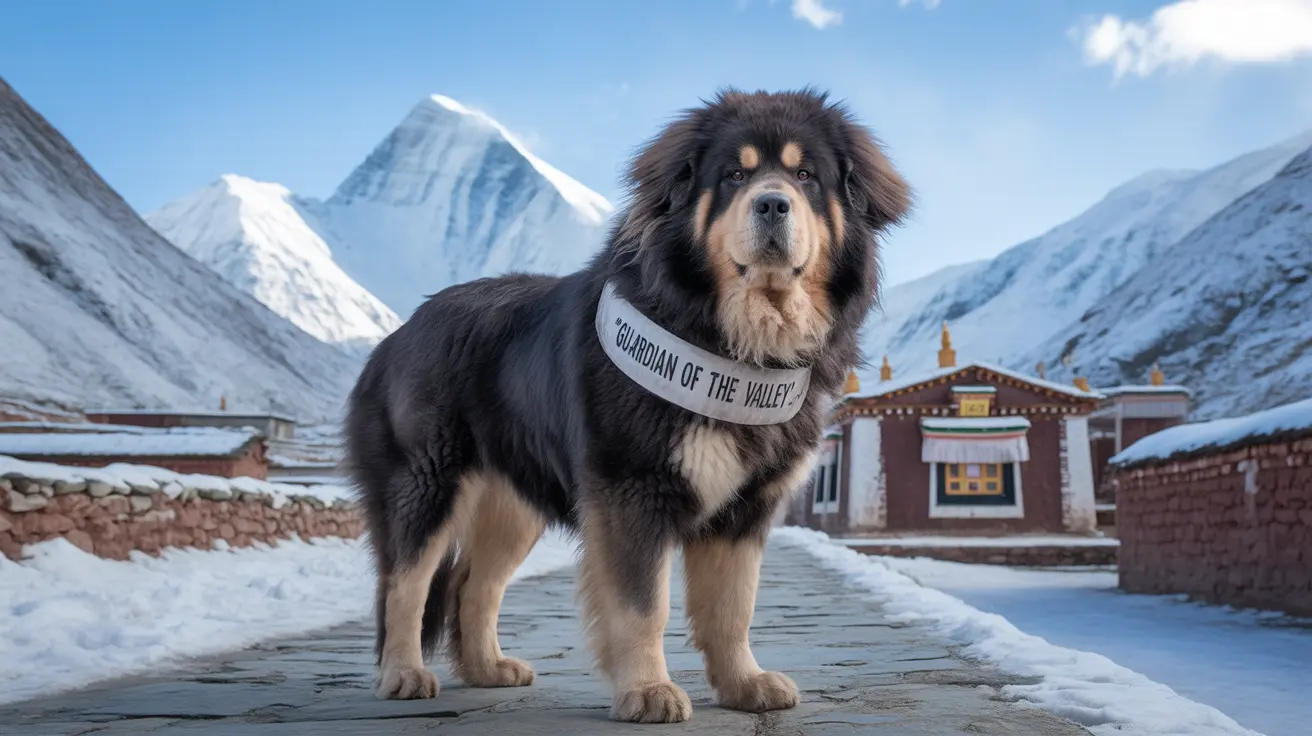The History and Legacy of Mastiff Guard Dogs
Mastiffs boast an impressive heritage dating back to ancient civilizations. Originally bred for warfare and property protection in Rome and Greece, these powerful dogs have evolved into trusted family guardians. Their reputation for protecting livestock, particularly against wolf attacks in European regions, continues to demonstrate their effectiveness as guardians.
Modern studies in Spain have shown that herds protected by mastiffs experience significantly fewer predator attacks, with only 21% of mastiff-guarded flocks suffering losses compared to 63% of unprotected herds.
Physical Characteristics That Make Mastiffs Exceptional Guards
The mastiff's most striking feature is their imposing size. Males typically weigh between 150-250 pounds and stand 27-30 inches tall, making them natural deterrents to potential threats. Their muscular build, broad head, and deep, resonating bark create an intimidating presence that often prevents confrontations before they begin.
Despite their formidable appearance, mastiffs move with surprising grace and maintain an alert yet calm demeanor. This combination of physical attributes makes them highly effective at their guardian role without appearing unnecessarily aggressive.
Understanding the Mastiff's Guardian Temperament
What truly sets mastiffs apart as guard dogs is their unique temperament. These dogs possess an innate ability to distinguish between genuine threats and normal activities, rarely displaying unnecessary aggression. Their protective instincts are balanced by an exceptionally gentle and patient nature, especially with family members.
Mastiffs exhibit strong territorial instincts while maintaining a level-headed approach to protection. They typically respond to threats with controlled authority rather than impulsive aggression, making them reliable guardians for families with children.
Training Requirements for Mastiff Guard Dogs
Successful guard dog training for mastiffs requires early socialization and consistent positive reinforcement. While naturally protective, these dogs benefit from structured training that reinforces appropriate defensive behaviors while preventing over-protectiveness.
- Early exposure to various people, animals, and environments
- Consistent boundary setting and command training
- Positive reinforcement of calm, controlled protective behaviors
- Regular socialization throughout their development
Health and Care Considerations
Maintaining a mastiff's effectiveness as a guard dog requires attention to their health and wellbeing. These dogs typically live 6-10 years and require regular veterinary care to prevent common health issues such as hip dysplasia and heart conditions.
- Regular exercise appropriate to their age and condition
- Careful weight management to prevent obesity
- Joint health monitoring, especially during growth periods
- Regular grooming and wrinkle care
- Proper nutrition to support their large frame
Frequently Asked Questions
What makes mastiffs such effective and reliable guard dogs for families and property?
Mastiffs combine natural protective instincts with an imposing physical presence and gentle temperament. Their size alone serves as a deterrent, while their intelligence allows them to assess threats accurately. They're particularly effective because they rarely display unnecessary aggression, making them safe around family while remaining vigilant against genuine threats.
How should I train and socialize my mastiff to ensure balanced protective behavior?
Start socialization early, exposing your mastiff to various people, animals, and situations. Use positive reinforcement techniques and consistent training methods. Focus on obedience training and establishing clear boundaries. Professional training guidance can be beneficial, especially during the crucial developmental period before age three.
What are the key physical and temperament traits of mastiffs that contribute to their guarding abilities?
Mastiffs possess impressive size (150-250 pounds), strong musculature, and a deep, intimidating bark. Their temperament combines natural protective instincts with calm confidence and good judgment. They're known for their loyalty, intelligence, and ability to remain composed while assessing potential threats.
How do mastiffs compare to other popular guard dog breeds in terms of protection style and family suitability?
Mastiffs tend to be less aggressive than other guard breeds, relying more on their size and presence as deterrents. They're generally calmer than German Shepherds or Dobermans and more family-oriented. Their protective style focuses on controlled responses rather than active pursuit or aggression.
What health and care considerations should I be aware of when owning a mastiff guard dog?
Mastiffs require regular veterinary care, proper nutrition, and moderate exercise. Monitor for common health issues like hip dysplasia and heart conditions. Their life span averages 6-10 years, and they need careful weight management. Regular grooming and attention to wrinkle care are essential for maintaining their health and comfort.






